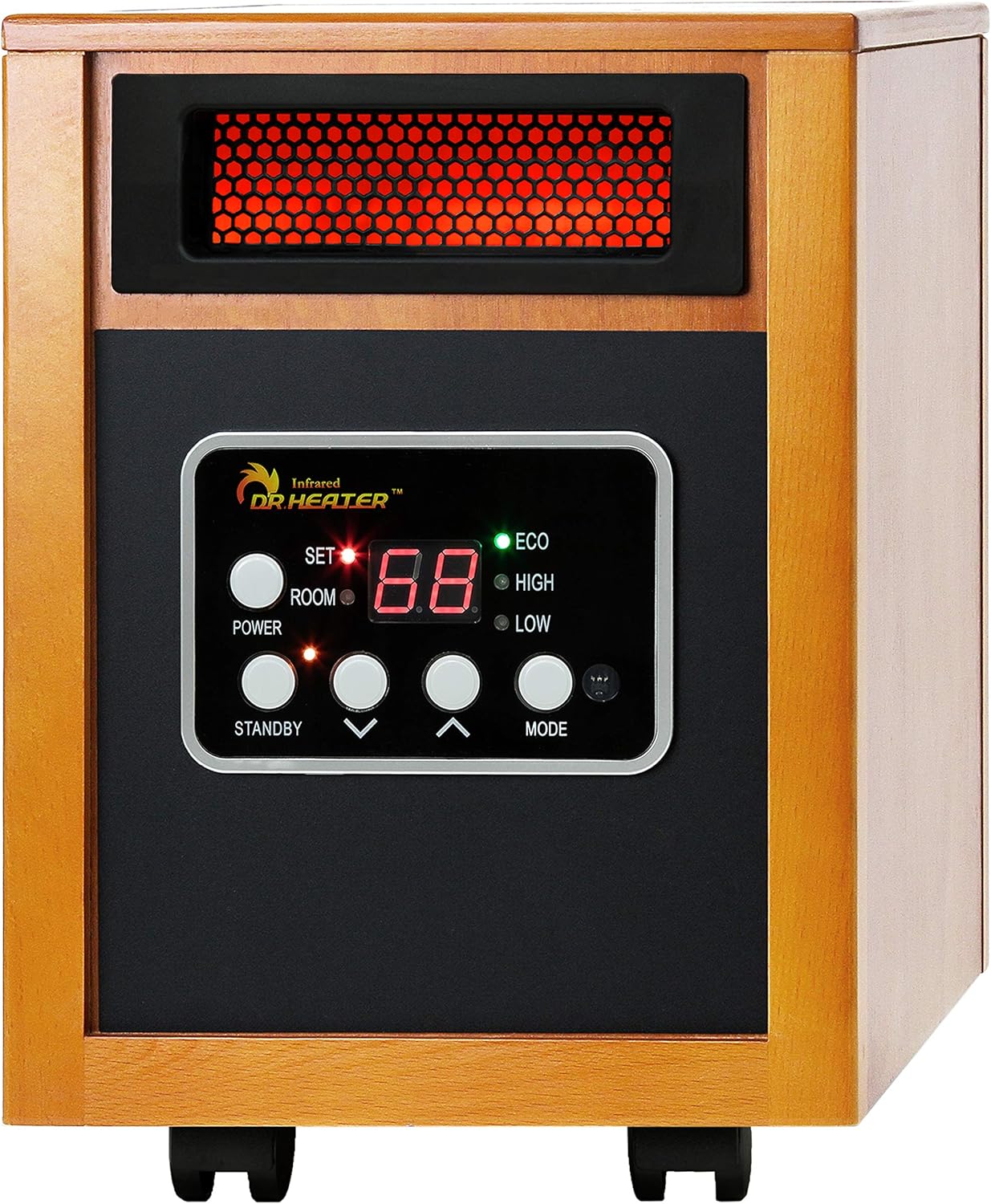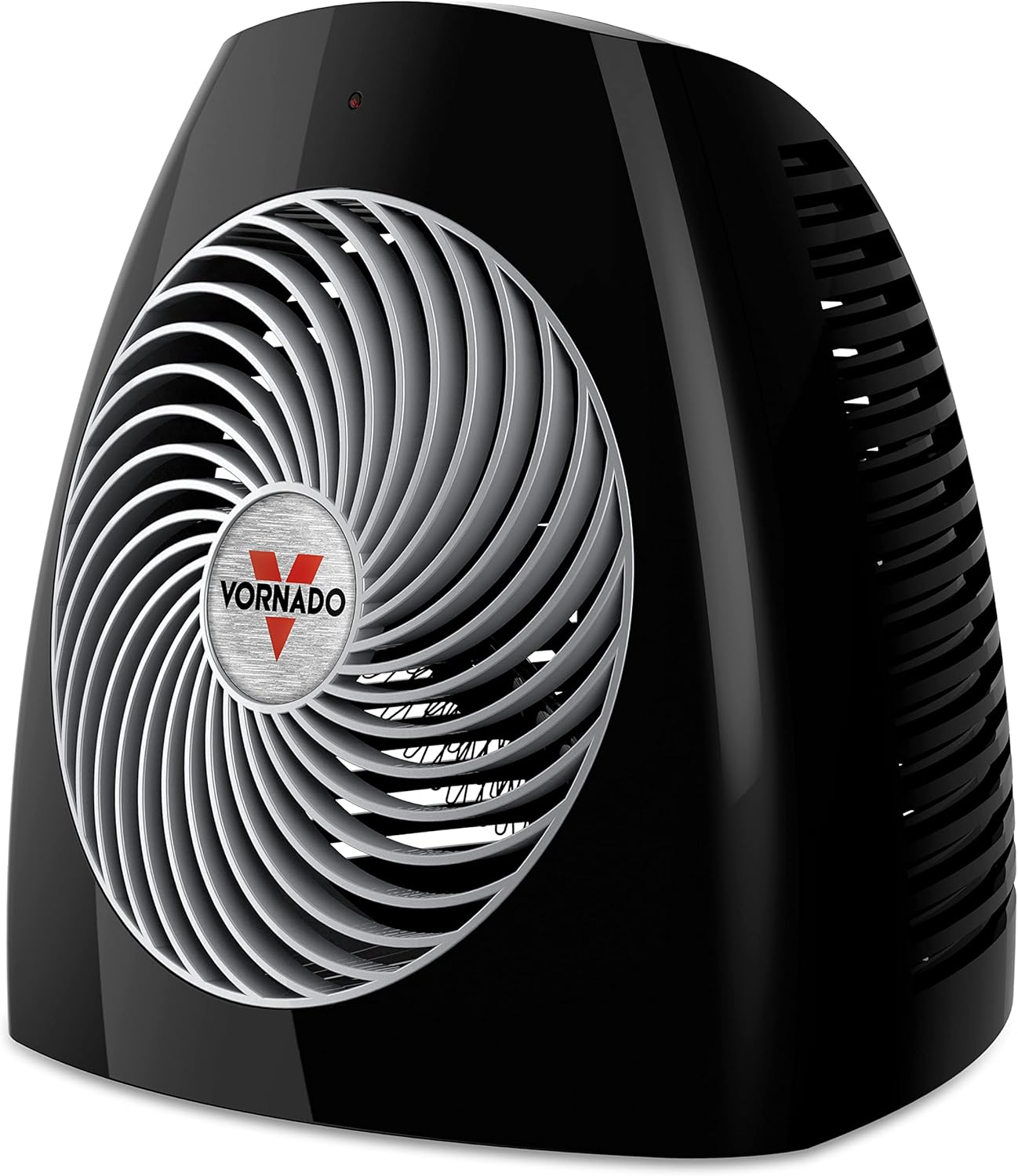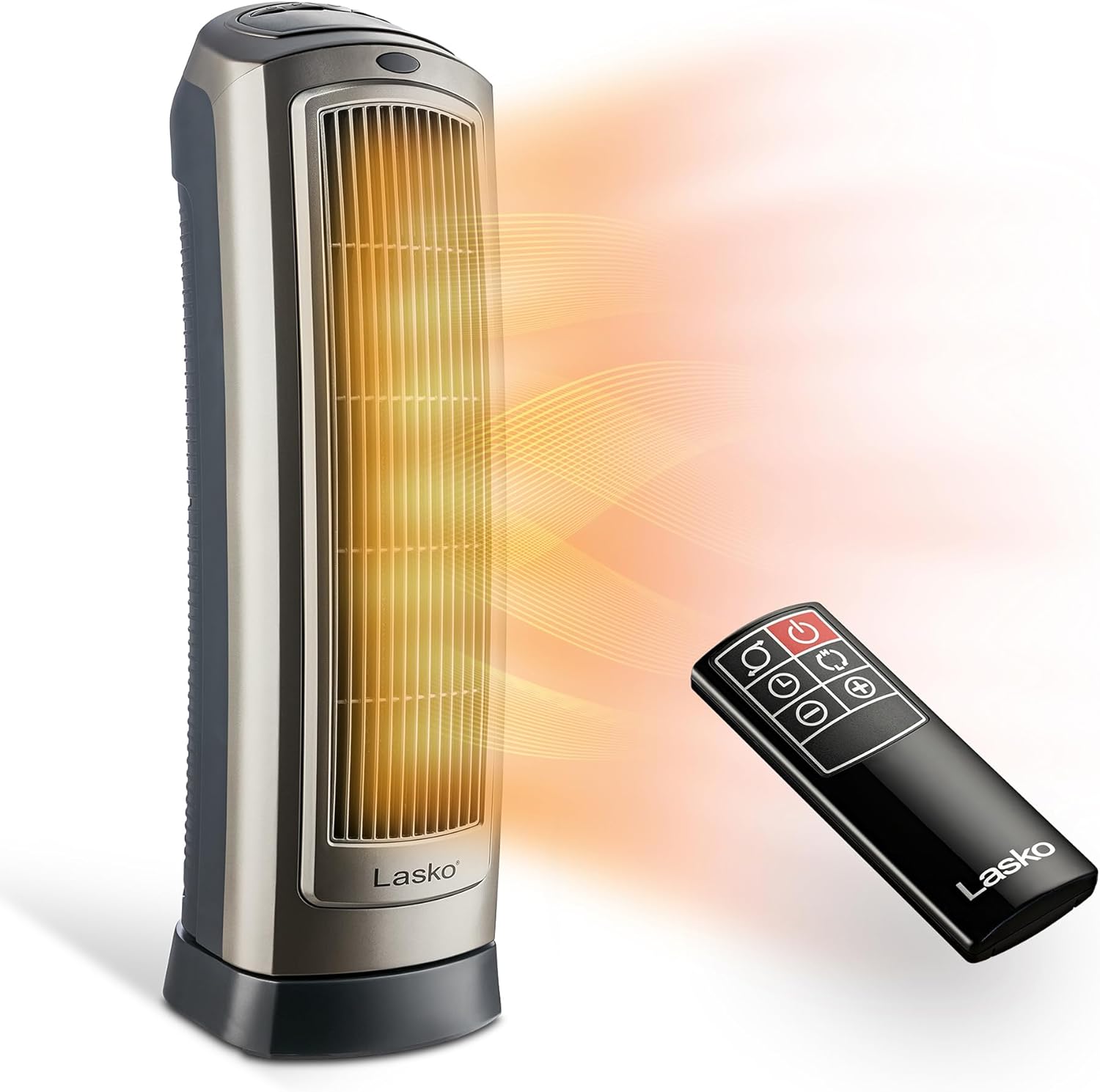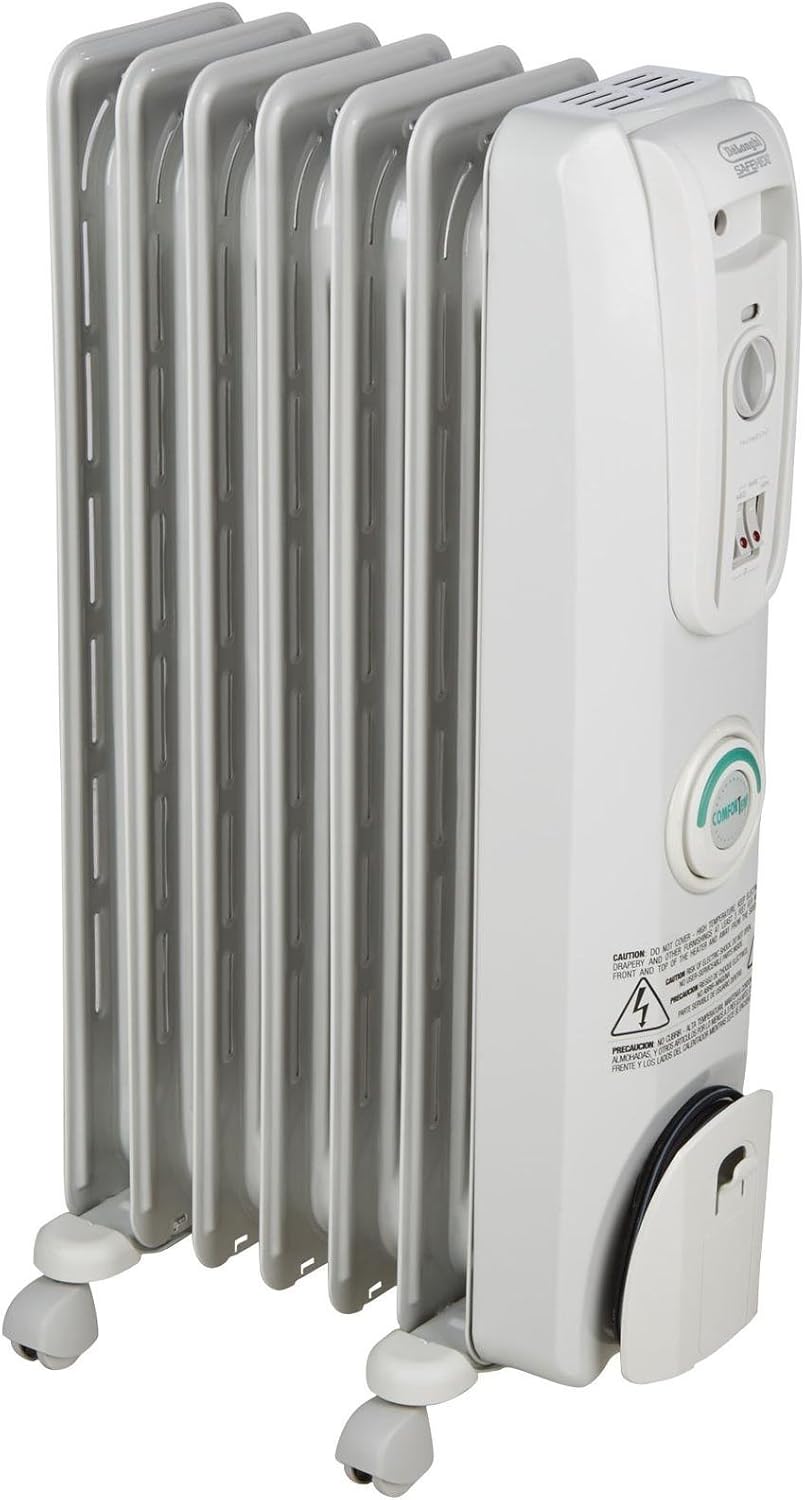Portable heaters are a lifesaver in the colder months—whether you’re working from a chilly home office or want to warm up a bedroom without cranking the thermostat. However, while they offer convenience and targeted heating, they can also pose serious safety risks when used improperly.
According to the U.S. Consumer Product Safety Commission (CPSC), portable space heaters are involved in more than 25,000 residential fires annually, causing hundreds of injuries and dozens of fatalities. The most common issues stem from:
Placing heaters too close to flammable materials
Using damaged cords or extension leads
Lack of automatic safety shut-off features
Poor supervision or forgetting to turn them off
That’s why choosing a safe and efficient portable heater is not just a matter of comfort—it’s about protecting your home and loved ones. In this guide, we’ll walk you through how to pick a heater that’s both safe and effective, what features to look for, and which models are leading the way in 2025.
Portable heaters have come a long way in terms of safety—but not all models are created equal. When choosing a unit, it’s essential to prioritize features that actively prevent fire hazards, overheating, and accidental injuries. Below is a detailed breakdown of must-have safety features, what they do, and why they matter for your home or office environment.
🔄 Tip-Over Switch (Automatic Tip-Over Shut-Off)
A tip-over switch is a critical safety feature that automatically shuts the heater off if it gets knocked over, tilts too far, or falls on its side.
Why it matters: A tipped-over heater can start a fire within seconds if it lands on flammable materials like rugs, bedding, or curtains.
Ideal for: Homes with pets, young children, or high foot traffic. Even a robotic vacuum can accidentally nudge a heater—this switch protects against that.
💡 Pro Tip: Always test this feature when you first unbox the heater. Simply tilt it gently to the side and ensure it powers down instantly.
🌡️ Overheat Protection
Overheat protection is a built-in sensor that monitors the heater’s internal temperature. If it detects that the unit is operating beyond safe levels, it will shut the heater down automatically.
Why it matters: Overheating can result from blocked air vents, electrical malfunctions, or continuous operation over long periods.
Added Benefit: Some heaters have a reset function that won’t allow them to turn back on until they’ve cooled to a safe temperature, giving you extra assurance.
❄️ Cool-Touch Exterior
A cool-touch casing ensures the outside of the heater remains safe to touch—even when the unit is operating at high temperatures.
Why it matters: It prevents burns from accidental contact, making it a key safety feature for households with children or pets.
Also good for: Offices, shared spaces, or anywhere people might brush past the unit without realizing it’s hot.
⏲️ Auto Shut-Off Timer
An automatic shut-off timer allows you to program your heater to turn off after a set amount of time.
Why it matters: It helps prevent energy waste and eliminates the risk of forgetting the heater on when you leave the room or go to sleep.
Great for: Overnight use, early mornings, or scheduled heating before you get home from work.
💡 Smart Tip: Look for digital models with programmable schedules or smart plug compatibility for added automation.
🔌 Thermostat with Temperature Regulation
A built-in thermostat allows the heater to automatically adjust output based on your desired room temperature.
Why it matters: Maintaining a consistent temperature not only keeps you comfortable—it also prevents the unit from running continuously, reducing wear and tear and risk of overheating.
Look for: Thermostats with adjustable settings, eco-modes, or digital precision.
✅ UL, ETL, or CSA Safety Certifications
Make sure any heater you buy has third-party safety certification labels, such as:
UL (Underwriters Laboratories)
ETL (Intertek)
CSA (Canadian Standards Association)
Why it matters: These certifications mean the unit has passed rigorous safety tests for electrical standards, fire resistance, and material durability.
Pro Tip: Don’t buy uncertified or no-name heaters online, especially from unknown marketplaces, even if they’re cheaper.
🧯 Flame-Resistant Housing
Some modern heaters feature flame-retardant plastic or metal housings that help contain potential sparks or overheating damage.
Why it matters: Adds another layer of passive protection, especially in prolonged use or high-heat settings.
🔕 Silent Operation (No Sparking or Clicking Sounds)
While not a “safety feature” in the strictest sense, quiet operation is a sign of internal build quality. Clicking, buzzing, or sparking noises may indicate:
Loose components
Worn-out heating elements
Electrical problems
Why it matters: Strange sounds can precede mechanical failure or overheating, so silence is golden when it comes to portable heaters.
🌧️ Moisture Protection (IP-Rated for Damp Locations)
If you plan to use your heater in a bathroom, laundry room, or kitchen, make sure it’s moisture-resistant and labeled for use in damp environments.
Look for: An IP (Ingress Protection) rating, such as IP21 or higher
Why it matters: Prevents water from entering the unit, which could cause electrical shorts or fire
🔄 Oscillation with Controlled Movement
Oscillating heaters move side-to-side to distribute heat more evenly. While this is primarily a comfort feature, it also plays a role in safety.
Why it matters: Prevents heat buildup in one area, which can cause objects or walls to become excessively hot.
By choosing a heater with these features, you’re doing more than just warming your room—you’re proactively preventing fires, reducing electrical risks, and keeping your household safe. Think of these features as an investment in your peace of mind.
When selecting a portable heater, it’s important to understand the underlying technology and performance differences among electric, ceramic, and infrared models. Each type utilizes a distinct mechanism to produce and distribute heat, impacting energy efficiency, safety features, and overall comfort.
Electric Heaters
How They Work:
Electric heaters function by converting electrical energy directly into heat. They typically use heating elements made of metal coils or wires that warm up as electricity passes through them.
Key Characteristics:
Simplicity: The design is straightforward with minimal moving parts. This simplicity often translates into a lower initial cost and fewer maintenance requirements.
Heat Distribution: These heaters usually rely on convection or simple fan-assisted distribution. Convection-based models warm the air around them, which then circulates through the room.
Energy Consumption: Although electric heaters are efficient at converting energy into heat, they may consume more electricity over extended periods if the room isn’t well insulated or if the heater is overused.
Advantages:
Ease of Use: Their plug-and-play nature makes electric heaters accessible to almost anyone.
No Emissions: Since they don’t burn fuel, they produce no carbon monoxide or other pollutants.
Variety of Designs: They come in many styles, including compact personal heaters and larger models suitable for room-wide heating.
Considerations:
Room Size Limitations: Electric heaters tend to be most effective in smaller spaces, as larger rooms may require multiple units or additional insulation to maintain a comfortable temperature.
Running Costs: Depending on local electricity rates and usage habits, the cost of operation can add up, especially when used as the sole source of heat over long periods.
How They Work:
Ceramic heaters use a ceramic heating element that warms up quickly when powered. The heat is then transferred to an aluminum baffle, which disperses the warmth via a fan that circulates the heated air throughout the space.
Key Characteristics:
Rapid Heating: The ceramic element heats up faster than traditional metal coils, making ceramic heaters an excellent choice for those who need quick warmth.
Even Distribution: With the aid of a built-in fan, the heated air is spread more uniformly throughout the area, helping avoid hot and cold spots.
Enhanced Safety: Many ceramic models include multiple safety features such as tip-over switches and overheat protection, which are particularly important in households with children or pets.
Advantages:
Energy Efficiency: The fast warm-up time and effective air circulation can lead to lower energy consumption.
Quiet Operation: Advanced ceramic heaters are designed to operate quietly, which is beneficial for environments like bedrooms or home offices.
Compact Designs: Their relatively small size makes them easy to move around and suitable for various indoor settings.
Considerations:
Fan Noise: Although many models strive for quiet operation, some ceramic heaters might produce a noticeable hum from the fan, which could be distracting in very quiet environments.
Cost Variability: The initial price can be slightly higher compared to some basic electric heaters, reflecting the added benefits of rapid heating and integrated safety features.
How They Work:
Infrared heaters produce heat by emitting infrared radiation, which directly warms objects and individuals in their line of sight rather than the air. This technology is similar to how the sun heats the earth, making it a highly effective method for targeted warming.
Key Characteristics:
Direct Heating: Infrared heaters deliver warmth directly to surfaces and people, which can create a more immediate feeling of heat compared to traditional methods that rely on air circulation.
Energy Focus: Because the heat is directed where it’s needed, infrared heaters often provide higher efficiency in specific settings, particularly in drafty or open environments where air-based heating might be less effective.
Silent Operation: The absence of moving parts such as fans means that infrared heaters operate with minimal noise, contributing to a quiet and comfortable ambiance.
Advantages:
Comfort-Oriented: The direct nature of infrared heat can be particularly comfortable during periods of focused activity or when sitting in a particular spot for an extended period.
Minimal Air Disruption: Since they do not rely on blowing air, infrared heaters do not disturb dust or allergens, which can be a significant benefit for individuals with respiratory sensitivities.
Lower Drying Effect: Infrared heating is less likely to dry out the air compared to conventional methods that rely on circulating hot air, thereby maintaining a more natural humidity level.
Considerations:
Coverage Area: Infrared heaters generally heat a localized area. This means that while the immediate vicinity might be very warm, the heat may not disperse as effectively to the rest of the room.
Cost and Installation: These heaters often come with a higher upfront cost and may require more careful placement to maximize their direct heating benefits.
Design Specifics: Some infrared models are designed with a more industrial or modern look, which might not always blend seamlessly with every interior decor style.
Understanding the mechanics behind each type of heater can help in aligning your choice with your heating needs. For instance, if your priority is quick and efficient warming for a small area, a ceramic heater’s rapid heat-up and fan-assisted distribution might be the optimal choice. If you require a steady, ambient heat without the noise of a fan, an infrared heater could provide a more pleasant experience. Meanwhile, electric heaters offer straightforward functionality and broad usability, especially in spaces where simplicity and ease of maintenance are paramount.
Each heating technology brings its own set of features that can enhance your comfort and safety. When assessing these options, consider factors such as room size, typical usage duration, and specific environmental conditions. Additionally, reviewing product specifications for energy efficiency ratings, integrated safety mechanisms, and user reviews can further inform a decision that suits your unique requirements.
In summary, while the foundational principle of each heater type is to convert electrical energy into warmth, the nuances in design and operation significantly influence performance, safety, and overall user experience. Armed with this detailed understanding, you can select a portable heater that not only meets your heating needs but also integrates seamlessly into your lifestyle and safety standards.
We’ve reviewed and analyzed dozens of models on the market to bring you a curated list of the safest and most efficient portable heaters available in 2025. These recommendations consider not only safety and energy efficiency but also real-world usability, heating performance, durability, and user satisfaction.

Type: Infrared + Convection Hybrid
Wattage: 1,500 watts
Ideal Room Size: Medium to large rooms (up to 1,000 sq ft)
Key Features:
Dual heating system (infrared and convection)
12-hour timer with automatic shut-off
Adjustable thermostat (50–85°F)
Remote control included
Tip-over and overheat protection
UL-certified
Why It Stands Out:
This hybrid heater combines the instant, targeted warmth of infrared with the ambient comfort of convection heat. That means it not only warms people and objects directly but also helps heat the surrounding air—making it one of the most powerful and comfortable heaters in its class.
Safety Performance:
Dr. Infrared prioritizes safety with an automatic shut-off feature if it tips over or overheats, and it’s enclosed in a cool-to-the-touch wooden cabinet, minimizing the risk of burns or fire. It’s a favorite in homes with kids or pets.
Who It’s For:
Perfect for those seeking fast and consistent warmth across larger areas like living rooms, open-plan spaces, or finished basements.

Type: Electric (Vortex Circulation Technology)
Wattage: 750W / 1,125W / 1,500W settings
Ideal Room Size: Small to medium rooms (up to 300 sq ft)
Key Features:
Vortex air circulation for even heat
Three heat settings and an adjustable thermostat
Automatic shut-off system
Cool-touch exterior
Tip-over protection
5-year warranty
Why It Stands Out:
Unlike traditional fan heaters that blow hot air in a single direction, the Vornado MVH uses vortex circulation to evenly distribute warm air throughout the entire room, eliminating cold corners and hot spots.
Safety Performance:
Equipped with an advanced auto shut-off system that activates in case of overheating or tipping, along with a cool-touch case that makes it ideal for use around children or pets. It’s also one of the few models backed by a 5-year warranty, reflecting its build quality and brand reliability.
Who It’s For:
A great choice for bedrooms, nurseries, or home offices where quiet operation and even, gentle heat are priorities.

Type: Ceramic
Wattage: 1,500 watts
Ideal Room Size: Medium rooms (up to 400 sq ft)
Key Features:
Oscillating tower design
Digital thermostat with temperature display
Remote control and programmable timer (up to 8 hours)
Overheat protection
Cool-touch housing
ETL certified
Why It Stands Out:
This sleek tower-style heater fits easily in corners or tight spaces and delivers wide-angle oscillation, spreading heat evenly across the room. The digital controls and included remote make it one of the more convenient heaters to use.
Safety Performance:
Includes automatic overheat protection and a cool-touch exterior, although it lacks a tip-over switch (so it’s best placed in low-traffic areas). Still, its ETL certification ensures compliance with rigorous safety standards.
Who It’s For:
An excellent option for living rooms or bedrooms where you want steady, distributed heat along with modern controls and quiet performance.

Type: Bladeless Fan Heater (Air Multiplier Technology)
Wattage: 1,500 watts
Ideal Room Size: Medium to large rooms (up to 600 sq ft)
Key Features:
Dual function: heating in winter, cooling in summer
Jet Focus for direct or diffused airflow
No exposed heating elements
Tip-over automatic shut-off
Intelligent thermostat
Remote control and app compatibility
Energy-efficient design
Why It Stands Out:
Dyson’s AM09 is a high-end hybrid heater and fan with an eye-catching bladeless design that’s both futuristic and extremely safe. The Jet Focus technology lets you switch between focused personal heat or wide-room airflow with the press of a button.
Safety Performance:
Because there are no spinning blades or exposed heating elements, it’s one of the safest heaters available. It also includes automatic shut-off if tipped, a built-in intelligent thermostat, and an auto-adjusting airflow feature.
Who It’s For:
Those looking for a premium, all-season appliance that can double as a cooling fan in summer. Also perfect for anyone concerned with aesthetics, noise levels, and cutting-edge safety.

Type: Oil-Filled Radiator
Wattage: 1,500 watts
Ideal Room Size: Medium to large rooms (up to 500 sq ft)
Key Features:
Permanently sealed oil reservoir (no refills needed)
Three heat settings and adjustable thermostat
Thermal cutoff and anti-freeze setting
Wheels for portability
Whisper-quiet operation
Tip-over switch and overheat protection
Why It Stands Out:
This oil-filled heater offers steady, gentle heat without any fans, making it ideal for overnight use or noise-sensitive environments. Once the oil inside heats up, it retains warmth even after the unit shuts off, improving energy efficiency.
Safety Performance:
The De’Longhi Comfort Temp includes a thermal cutoff to prevent overheating, a tip-over shut-off switch, and a stay-cool surface. Since it doesn’t blow air, it also reduces dust and allergens in the room—ideal for allergy sufferers or asthmatics.
Who It’s For:
A solid choice for bedrooms, nurseries, or anywhere that needs quiet, long-lasting heat. It’s especially effective for people who run heaters throughout the night but still want maximum safety.
| Heater Model | Heating Type | Safety Features | Room Size | Noise Level | Unique Advantage |
|---|---|---|---|---|---|
| Dr. Infrared Heater | Infrared + Convection | Tip-over, Overheat, Cool-touch | Large | Quiet | Dual heating system |
| Vornado MVH | Electric (Vortex) | Tip-over, Overheat, Cool-touch | Small/Medium | Very quiet | Even heat circulation |
| Lasko 755320 | Ceramic Tower | Overheat, Cool-touch | Medium | Low | Oscillation + Remote |
| Dyson AM09 | Bladeless Heater | Tip-over, No exposed parts | Medium/Large | Ultra quiet | Year-round use |
| De’Longhi Radiator | Oil-Filled | Tip-over, Thermal Cutoff | Medium/Large | Silent | Heat retention & allergen-free |
Each of these models represents a top-tier combination of safety, performance, and value, offering something unique based on the type of room and user needs. Whether you prioritize silent operation, quick warmth, advanced smart features, or classic reliability, there’s a model on this list that’s ready to keep you warm—safely and efficiently.
Choosing the right portable heater in 2025 is about far more than just staying warm—it’s about ensuring safety, maximizing energy efficiency, and finding a solution that fits seamlessly into your living or working environment. With an ever-growing market of models boasting advanced features and sleek designs, it’s easier than ever to make a choice that doesn’t compromise comfort for safety—or vice versa.
Throughout this guide, we’ve explored the most common safety concerns surrounding portable heaters, such as fire hazards, tipping, and overheating. We then highlighted the essential safety features to look for, including tip-over switches, overheat protection, cool-touch exteriors, auto shut-off timers, and third-party certifications like UL or ETL. These are not just “nice-to-haves”—they are critical for preventing accidents and ensuring peace of mind, especially in homes with children, pets, or high foot traffic.
We also broke down the differences between electric, ceramic, and infrared heaters, helping you understand how each technology works and where it performs best. Whether you’re looking for quick warmth in a small office or consistent, quiet heat in a large living room, knowing the type of heater to choose can make all the difference in both performance and power bills.
To make the decision even easier, we presented a list of the safest and most efficient heaters on the market today, carefully reviewed for real-world usability, reliability, and safety. From the high-performance Dr. Infrared Heater to the ultra-quiet and modern Dyson AM09, each option has something unique to offer depending on your space, style, and needs.
As a final thought, remember that safe operation doesn’t stop at choosing the right heater. Responsible placement, proper maintenance, and smart usage habits—like avoiding extension cords, not leaving heaters unattended, and regularly cleaning vents—are all part of a smart, long-term heating strategy. Combine the right product with the right practices, and you can enjoy a warm, cozy environment without worrying about safety risks or high energy costs.
If you found this guide helpful, take the next step:
Compare the top-rated heaters listed above and choose the one that best matches your space.
Bookmark this page for future reference or share it with someone who’s shopping for a safe space heater.
Still unsure? Drop your questions in the comments—we’re here to help you heat smarter.
| Cookie | Duration | Description |
|---|---|---|
| cookielawinfo-checbox-analytics | 11 months | This cookie is set by GDPR Cookie Consent plugin. The cookie is used to store the user consent for the cookies in the category "Analytics". |
| cookielawinfo-checbox-functional | 11 months | The cookie is set by GDPR cookie consent to record the user consent for the cookies in the category "Functional". |
| cookielawinfo-checbox-others | 11 months | This cookie is set by GDPR Cookie Consent plugin. The cookie is used to store the user consent for the cookies in the category "Other. |
| cookielawinfo-checkbox-necessary | 11 months | This cookie is set by GDPR Cookie Consent plugin. The cookies is used to store the user consent for the cookies in the category "Necessary". |
| cookielawinfo-checkbox-performance | 11 months | This cookie is set by GDPR Cookie Consent plugin. The cookie is used to store the user consent for the cookies in the category "Performance". |
| viewed_cookie_policy | 11 months | The cookie is set by the GDPR Cookie Consent plugin and is used to store whether or not user has consented to the use of cookies. It does not store any personal data. |